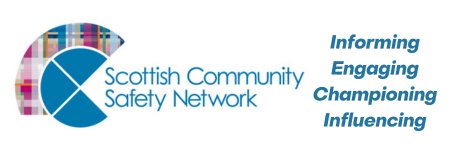The last month or so has been pretty exciting for those of us with a keen interest in data and research with a lot of publications relevant to safer communities.
The Scottish Centre for Crime and Justice Research (SCCJR) published a report ‘Taking Stock of Violence in Scotland Report’ which compiles the wealth of research in this area into a single document for the first time. It highlights the key trends and patterns of known violence, but it importantly also shows what areas have been under-researched.
Lead author Dr Susan Batchelor, a Senior Lecturer at the University of Glasgow and based at the SCCJR, said: “One of the headline findings to emerge was that people in the most marginalised and vulnerable groups appear to be worse off compared with others than before the crime drop. It seems that violence in Scotland – or violence victimisation – is becoming more concentrated in the most deprived communities and amongst particular groups of repeat violent victims.”
Having examined what is known to date about violence in Scotland, Dr Batchelor said there appeared to be surprisingly little research conducted into a number of areas including the lived experience of repeat violence victimisation and the relationships between drugs, alcohol and violence. Hate crime was identified as a key priority for future research: “Especially lacking is research looking at the experiences of – and responses to – disabled people and other multiply marginalised populations, including those living in institutional settings.”
Dr Batchelor added: “We also identified a need for more up-to-date research on the relationship between violent offending and shifting patterns of alcohol consumption, following recent changes in alcohol licencing for example, as well as on the links between drugs, violence and organised crime.”
Results from the Growing Up in Scotland (GUS) study on life aged twelve were published: and I joined the GUS conference to hear more about this in Edinburgh on 9th October and was very interested in the inputs on ‘risky behaviour and peer relationships.’
- Twenty percent of children said they had ever drunk alcohol. This was higher amongst boys than girls (23% compared with 17%). However, only 1% of all children said they had been drunk. Experience of drinking alcohol did not vary significantly by area deprivation. Children who had smoked were significantly more likely than those who had not smoked to have also drunk alcohol.
- Thirty percent of children reported being involved in at least one of a list of antisocial behaviour (ASB), with boys more likely than girls to have done so (40% compared with 21%).
You can see all the slides from the day here.
The Scottish Government published reported crime statistics:
The most recent Scottish Government Recorded Crime Statistics have recently been published. It’s worth using these alongside the Scottish Crime and Justice Survey published in March of this year. Have a look at the new interactive tool for looking at the findings here.
Some results from the Scottish Household Survey (SHS) including Local Authority tables were published in September and October 2019.
Scottish Health Survey (SHeS) findings were also released. Readers may also be interested having a look at the interactive Scottish Public Health Observatory (ScotPHO) profile tool too.
